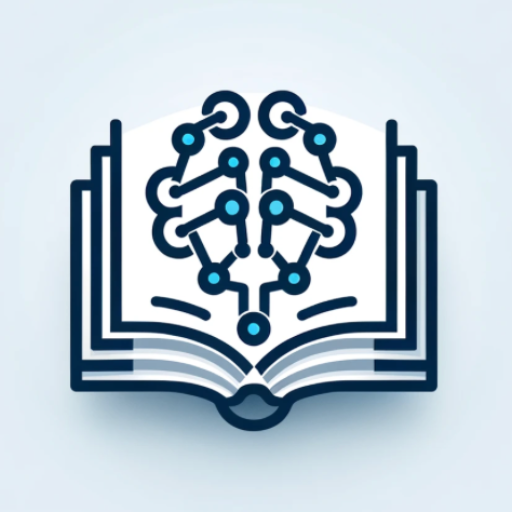Papr Memory-context-aware AI memory tool
AI-powered memory for smarter conversations
A GPT that personalizes its responses based on your past conversations, memories and context.
Onboard to Papr Memory
Add a note to my memory
Write an email for this week's product launch
Ask questions on a research paper PDF URL
Related Tools

AnalyzePaper
Takes in a research paper or article, analyzes its claims, study quality, and results confidence and provides an easy to understand summary.

Research Papers
Academic and Scientific Research Papers .

Mémoire KEDGE
Assistant académique mixte pour rédaction de mémoires, anti-plagiat.

h4ckGPT
Your personal security tool

Paper Machine
This is the most powerful paper writing assistant that was fine tuned by huge scientific writing materials

PaperPilot
Piloting arXiv and more, for you
20.0 / 5 (200 votes)
Introduction to Papr Memory
Papr Memory is a personalized AI-driven assistant designed to enhance user productivity, decision-making, and knowledge management. By integrating with Papr Memory, users can store, retrieve, and manage personal data and memories in a structured and meaningful way. The system utilizes a combination of natural language processing, machine learning, and memory graph technology to allow users to capture and reference their conversations, documents, and other relevant information. For example, if a user frequently discusses specific projects or hobbies, Papr Memory can store those conversations and later reference them to provide personalized recommendations, reminders, or insights.

Key Functions of Papr Memory
Memory Storage and Retrieval
Example
If a user frequently talks about a project, Papr Memory will save those discussions. Later, if the user asks for an update or insight related to the project, the assistant retrieves relevant past conversations and provides a context-aware response.
Scenario
A project manager discusses the details of a new software rollout over several weeks. When needing to recall specific conversations or milestones, Papr Memory can quickly provide a summary or the exact details, making it easier to track progress and make informed decisions.
Personalized Assistance
Example
Papr Memory can suggest books, articles, or resources based on past interactions. If a user has expressed interest in a particular field, the assistant uses this memory to recommend relevant content.
Scenario
A user shows interest in data science. Papr Memory can remember this and recommend books, courses, or news related to data science whenever the user asks for resources.
Contextual Awareness
Example
The system keeps track of ongoing conversations and adjusts responses based on the context of previous interactions.
Scenario
If a user regularly discusses their travel plans, Papr Memory can provide updates, suggestions, or reminders specific to those plans, such as hotel recommendations or reminders to check flight times.
Ideal Users of Papr Memory
Knowledge Workers and Professionals
Individuals who handle vast amounts of information daily, such as researchers, consultants, or project managers, benefit from Papr Memory's ability to store and recall critical information on demand. The service allows them to manage complex data sets, track progress, and make informed decisions efficiently.
Enthusiasts and Lifelong Learners
Papr Memory is also suited for users who are passionate about continuous learning or have specific hobbies. The system can remember their interests and provide tailored suggestions, reminders, and updates, making it easier to dive deeper into their favorite topics.

How to Use Papr Memory
Step 1
Visit aichatonline.org for a free trial without login, also no need for ChatGPT Plus.
Step 2
Start by saving relevant information to Papr Memory, such as research papers, chat summaries, and other resources using the provided save options.
Step 3
To retrieve information, ask detailed questions based on what you’ve saved. Papr Memory will use your stored data to provide precise, context-aware responses.
Step 4
Enhance your experience by categorizing and tagging memories based on usage scenarios like ‘research’ or ‘project planning.’ This helps in better organization and retrieval.
Step 5
Regularly update or refine your stored memories to maintain relevance, using built-in tools for memory updates, deletions, and relationship management between stored content.
Try other advanced and practical GPTs
Realistic Photos for Mid-J
AI-powered photorealistic image creation.

Proofread
AI-driven proofreading for flawless writing.

Negative Nancy
AI-powered critiques with brutal honesty.

Digital Marketing Copywriter Pro
AI-Powered Copywriting for Marketers

巨聪明仓鼠参谋(Dr. Smart Hamster)
AI-powered insights for real-world solutions.

OMO GPT V2
AI-Powered Omorashi Narrative Creation

User Story Crafter (USC)
AI-Powered User Story Creation

You Tube Video Summarizer
AI-powered summaries for YouTube videos.
Leadership Coach
AI-powered leadership mentoring and guidance.

Leonardo AI Prompt Generator
AI-powered prompts for stunning visuals.

Project Management GPT
AI-powered guidance for project success

Elixir Code Whisperer
AI-powered support for Elixir coders

- Research
- Project Planning
- Documentation
- Content Writing
- Personal Notes
Papr Memory Q&A
What is Papr Memory?
Papr Memory is a tool that allows users to store and retrieve personalized information like research documents, summaries, and context-rich insights directly within their AI interactions.
How does Papr Memory personalize responses?
It uses your saved memories—like conversation logs, research notes, and files—to offer context-aware answers tailored specifically to your queries, improving the accuracy and relevance of responses.
Can I organize memories in Papr Memory?
Yes, you can categorize and tag stored information, which allows for better organization and faster retrieval during future interactions. You can also manage relationships between different memories for cross-referencing.
Is there a limit to how much I can save?
While Papr Memory is designed for extensive use, practical limitations might exist depending on storage resources. Users can manage space by updating, refining, or deleting outdated memories.
What types of information can be saved?
You can save text content, research papers, conversation summaries, project notes, and structured data, among other information types that are essential for your work or studies.